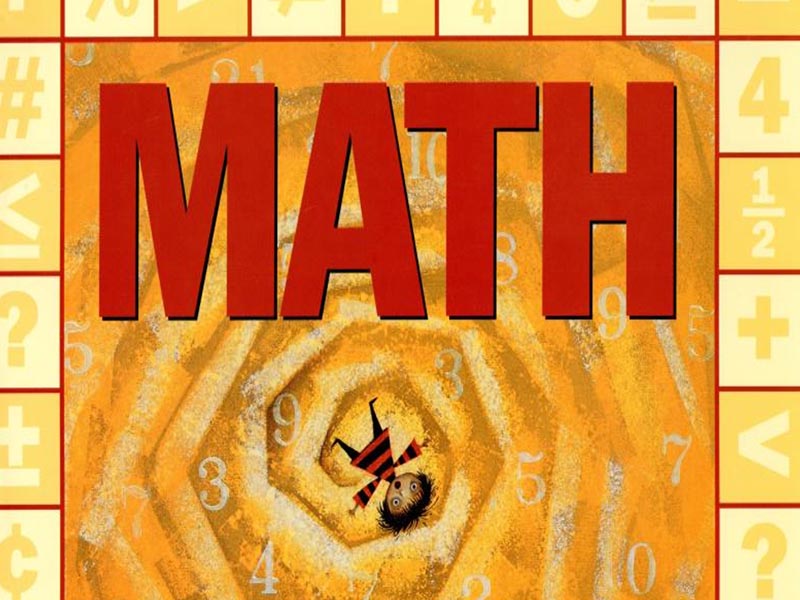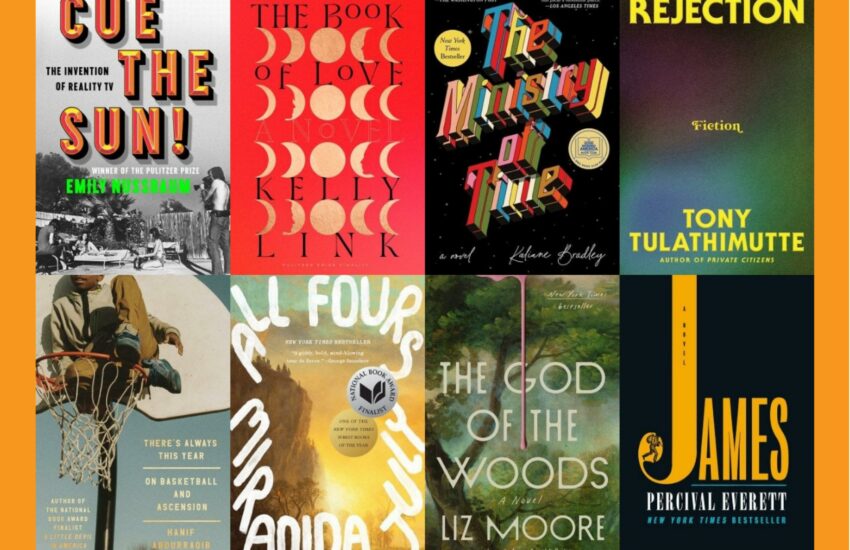The Best Books About Math
“What are the best books about Math?” We looked at 390 of the top Math books, aggregating and ranking them so we could answer that very question!
The top 40 titles, all appearing on 2 or more “Best Math” book lists, are ranked below by how many lists they appear on. The remaining 350 titles, as well as the lists we used are in alphabetical order at the bottom of the page.
Happy Scrolling!
Top 40 Books About Math
40 .) A Mathematician’s Apology written by G.H. Hardy
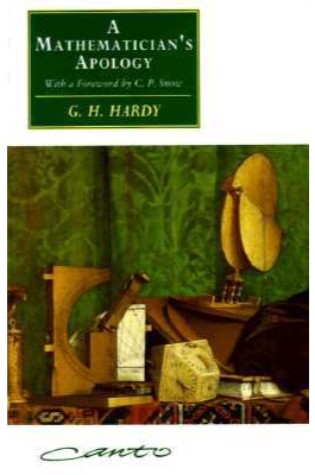
Lists It Appears On:
- Five Books
- Goodreads
Written in 1940 as his mathematical powers were declining, G.H. Hardy’s apology offers an engaging account of the thoughts of a man known for his eccentricities as well as his brilliance in mathematics.
39 .) A Tour of the Calculus written by David Berlinski
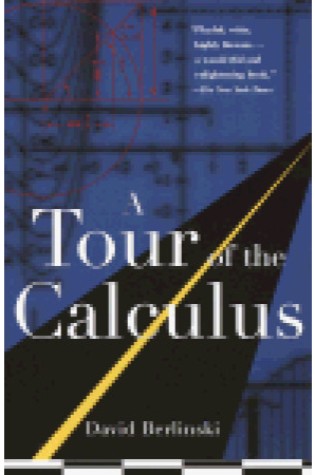
Lists It Appears On:
- Goodreads
- Ted
Were it not for the calculus, mathematicians would have no way to describe the acceleration of a motorcycle or the effect of gravity on thrown balls and distant planets, or to prove that a man could cross a room and eventually touch the opposite wall. Just how calculus makes these things possible and in doing so finds a correspondence between real numbers and the real world is the subject of this dazzling book by a writer of extraordinary clarity and stylistic brio. Even as he initiates us into the mysteries of real numbers, functions, and limits, Berlinski explores the furthest implications of his subject, revealing how the calculus reconciles the precision of numbers with the fluidity of the changing universe.
38 .) Abstract Algebra

Lists It Appears On:
- Math Blog
- Wikipedia
37 .) An Introduction to the Theory of Numbers
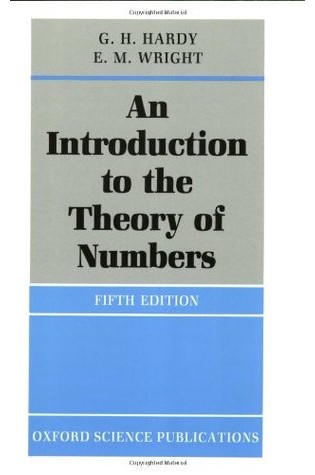
Lists It Appears On:
- Math Blog
- Wikipedia
The fifth edition of this classic reference work has been updated to give a reasonably accurate account of the present state of knowledge.
36 .) Calculus
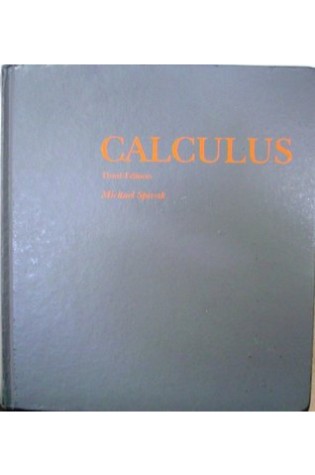
Lists It Appears On:
- Math Blog
- Wikipedia
Spivak’s celebrated textbook is widely held as one of the finest introductions to mathematical analysis. His aim is to present calculus as the first real encounter with mathematics: it is the place to learn how logical reasoning combined with fundamental concepts can be developed into a rigorous mathematical theory rather than a bunch of tools and techniques learned by rote. Since analysis is a subject students traditionally find difficult to grasp, Spivak provides leisurely explanations, a profusion of examples, a wide range of exercises and plenty of illustrations in an easy-going approach that enlightens difficult concepts and rewards effort. Calculus will continue to be regarded as a modern classic, ideal for honours students and mathematics majors, who seek an alternative to doorstop textbooks on calculus, and the more formidable introductions to real analysis.
35 .) Calculus, Vol. 1
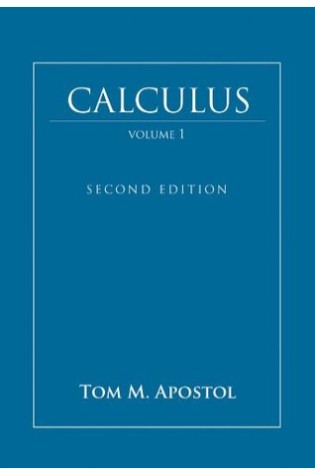
Lists It Appears On:
- Math Blog
- Wikipedia
Now available in paperback! An introduction to the calculus, with an excellent balance between theory and technique. Integration is treated before differentiation–this is a departure from most modern texts, but it is historically correct, and it is the best way to establish the true connection between the integral and the derivative. Proofs of all the important theorems are given, generally preceded by geometric or intuitive discussion. This Second Edition introduces the mean-value theorems and their applications earlier in the text, incorporates a treatment of linear algebra, and contains many new and easier exercises.
34 .) Categories for the Working Mathematician
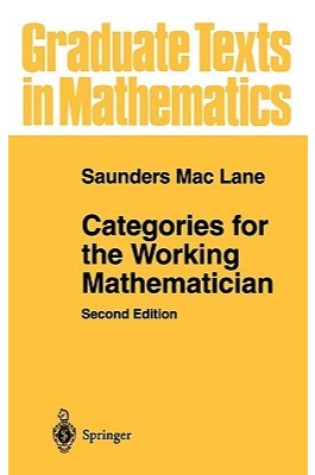
Lists It Appears On:
- Math Blog
- Wikipedia
Categories for the Working Mathematician provides an array of general ideas useful in a wide variety of fields. Starting from the foundations, this book illuminates the concepts of category, functor, natural transformation, and duality. The book then turns to adjoint functors, which provide a description of universal constructions, an analysis of the representations of functors by sets of morphisms, and a means of manipulating direct and inverse limits. These categorical concepts are extensively illustrated in the remaining chapters, which include many applications of the basic existence theorem for adjoint functors. The categories of algebraic systems are constructed from certain adjoint-like data and characterized by Beck’s theorem. After considering a variety of applications, the book continues with the construction and exploitation of Kan extensions.
33 .) Cryptonomicon written by Neal Stephenson
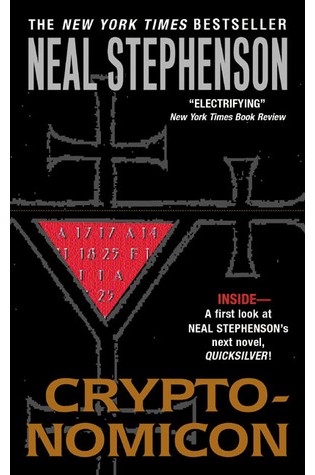
Lists It Appears On:
- Barnes And Noble
- Goodreads
Cryptonomicon zooms all over the world, careening conspiratorially back and forth between two time periods–World War II and the present. Our 1940s heroes are the brilliant mathematician Lawrence Waterhouse, crypt analyst extraordinaire, and gung-ho, morphine-addicted marine Bobby Shaftoe. They’re part of Detachment 2702, an Allied group trying to break Axis communication codes while simultaneously preventing the enemy from figuring out that their codes have been broken. Their job boils down to layer upon layer of deception. Dr. Alan Turing is also a member of 2702, and he explains the unit’s strange workings to Waterhouse. “When we want to sink a convoy, we send out an observation plane first… Of course, to observe is not its real duty–we already know exactly where the convoy is. Its real duty is to be observed… Then, when we come round and sink them, the Germans will not find it suspicious.” All of this secrecy resonates in the present-day story line, in which the grandchildren of the WWII heroes–inimitable programming geek Randy Waterhouse and the lovely and powerful Amy Shaftoe–team up to help create an offshore data haven in Southeast Asia and maybe uncover some gold once destined for Nazi coffers. To top off the paranoiac tone of the book, the mysterious Enoch Root, key member of Detachment 2702 and the Societas Eruditorum, pops up with an unbreakable encryption scheme left over from WWII to befuddle the 1990s protagonists with conspiratorial ties.
32 .) Each Orange Had 8 Slices: A Counting Book written by Paul Giganti, Jr & Donald Crews

Lists It Appears On:
- Prodigy Game
- Top Notch Teaching
If each orange has 8 slices and each slice has 2 seeds, then how many seeds are there in all? You’ll have fun multiplying, adding, and counting your way through the math puzzles hiding in the world all around you.
31 .) Euclid’s Elements written by Euclid
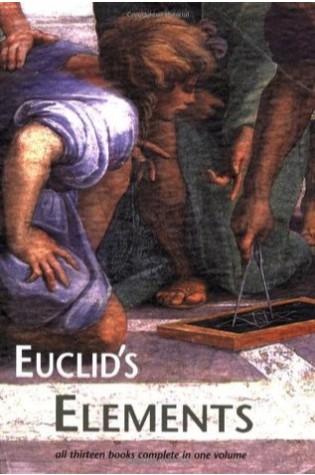
Lists It Appears On:
- Goodreads
- Wikipedia
Green Lion Press has prepared a new one-volume edition of T.L. Heath’s translation of the thirteen books of Euclid’s Elements. In keeping with Green Lion’s design commitment, diagrams have been placed on every spread for convenient reference while working through the proofs; running heads on every page indicate both Euclid’s book number and proposition numbers for that page; and adequate space for notes is allowed between propositions and around diagrams. The all-new index has built into it a glossary of Euclid’s Greek terms. Heath’s translation has stood the test of time, and, as one done by a renowned scholar of ancient mathematics, it can be relied upon not to have inadvertantly introduced modern concepts or nomenclature. We have excised the voluminous historical and scholarly commentary that swells the Dover edition to three volumes and impedes classroom use of the original text. The single volume is not only more convenient, but less expensive as well.
30 .) Five Little Monkeys Go Shopping written by Eileen Christelow
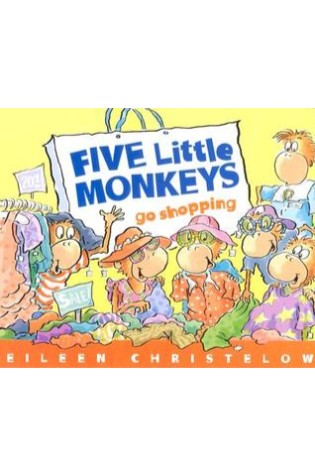
Lists It Appears On:
- A Spirited Mind
- Top Notch Teaching
The day before school starts, Mama takes her five little monkeys shopping for clothes. “Stay right here,” she says, “AND DON’T GO WANDERING OFF!” But one little monkey has to go to the bathroom . . . and two little monkeys get thirsty. . . . Then three little monkey friends arrive . . . and four little monkeys decide to go help find the others. . . . Will Mama ever have all five of her little monkeys together again? Eileen Christelow’s vibrant, expressive illustrations accompany a catchy text that’s great for reading aloud. Simple math lessons are seamlessly incorporated into the fun.
29 .) How to Be a Math Genius
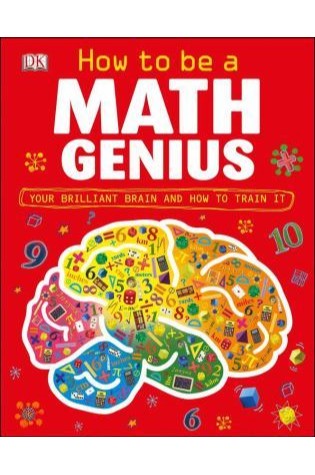
Lists It Appears On:
- Prodigy Game
- Read Brightly
In this clever guide, young readers previously daunted by algebra, logic, algorithms, and all things math will discover they are better at it than they thought. “How to be a Math Genius” explores the math brain and demonstrates to readers that they use math skills all the time — they just don’t know it yet. Packed with math activities and puzzles, compelling stories of math geniuses, math facts and stats, and more, “How to be a Math Genius” makes the dreaded subject of math both engaging and relevant.
28 .) Innumeracy: Mathematical Illiteracy and Its Consequences written by John Allen Paulos
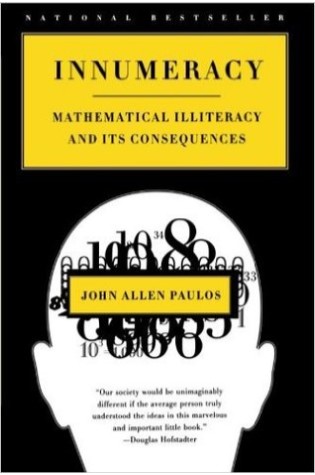
Lists It Appears On:
- Goodreads
- Ted
Dozens of examples in innumeracy show us how it affects not only personal economics and travel plans, but explains mis-chosen mates, inappropriate drug-testing, and the allure of pseudo-science.
27 .) Life of Fred Series
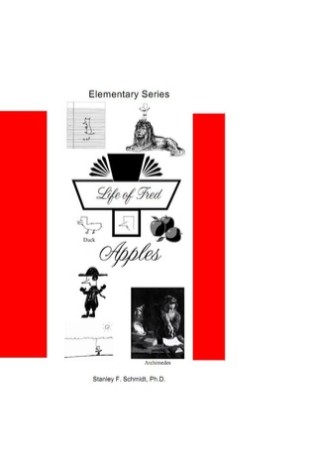
Lists It Appears On:
- Cross Talk
- Prodigy Game
Numbers that Add to 7, Circles, Ellipses, Reading 6:00 on a Clock, 5 + ? = 7, Days of the Week, Leap Years, Spelling February, Dressing for Cold Weather, 15 Degrees Below Zero (–15º), Deciduous Trees, Deciduous Teeth, Counting by Fives, 3x + 4x = 7x, Archimedes 287 B.C. Wrote The Sand Reckoner and Got Killed Being Rude, ante meridiem (a.m.), Donner and Blitz in German, One Million, Euclid Wrote The Elements, Squares, Pacific and Atlantic Oceans, Whales Are Not Fish, The “There Are Zero . . .” Game, Sets, the Popularity of Zero, Why Boats Are Cheaper to Rent in the Winter, Triangles, Herbivores and Carnivores, the Colors of the Rainbow, a King in Checkmate, the Story of the Titanic, ≠ (not equal), x + 4 = 7, One Thousand, Counting by Hundreds, Reading 3:05 on a Clock, Rectangles.
26 .) Logicomix written by Apostolos Doxiadis and Christos H Papadimitriou
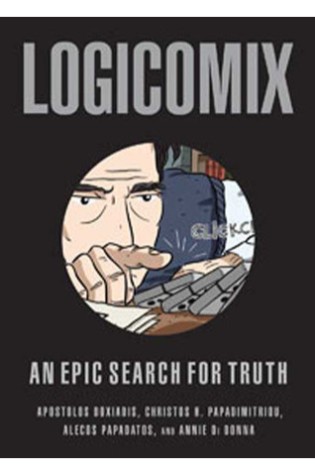
Lists It Appears On:
- Five Books
- Ted
An innovative, dramatic graphic novel about the treacherous pursuit of the foundations of mathematics. This graphic novel recounts the spiritual odyssey of philosopher Bertrand Russell. In his agonized search for absolute truth, he crosses paths with thinkers like Gottlob Frege, David Hilbert & Kurt Gödel, & finds a passionate student in Ludwig Wittgenstein. But his most ambitious goal—to establish unshakable logical foundations of mathematics—continues to loom before him. Thru love & hate, peace & war, he persists in the mission threatening to claim both his career & happiness, finally driving him to the brink of insanity. This story is at the same time a historical novel & an accessible explication of some of the biggest ideas of mathematics & modern philosophy. With rich characterizations & atmospheric artwork, it spins the pursuit of such ideas into a satisfying tale. Probing, layered, the book throws light on Russell’s inner struggles while setting them in the context of the timeless questions he tried to answer. At its heart, Logicomix is a story about the conflict between ideal rationality & the flawed fabric of reality.
25 .) Magical Mathematics written by Persi Diaconis and Ron Graham
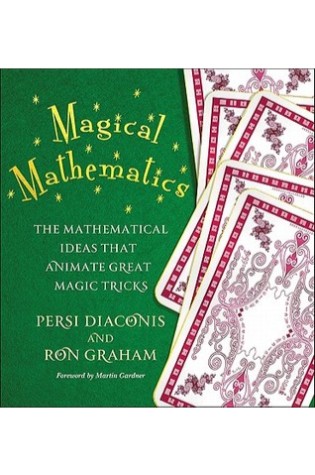
Lists It Appears On:
- Prodigy Game
- The Guardian
Magical Mathematics reveals the secrets of fun-to-perform card tricks–and the profound mathematical ideas behind them–that will astound even the most accomplished magician. Persi Diaconis and Ron Graham provide easy, step-by-step instructions for each trick, explaining how to set up the effect and offering tips on what to say and do while performing it. Each card trick introduces a new mathematical idea, and varying the tricks in turn takes readers to the very threshold of today’s mathematical knowledge. Diaconis and Graham tell the stories–and reveal the best tricks–of the eccentric and brilliant inventors of mathematical magic. The book exposes old gambling secrets through the mathematics of shuffling cards, explains the classic street-gambling scam of three-card Monte, traces the history of mathematical magic back to the oldest mathematical trick–and much more.
24 .) Mathematics: From the Birth of Numbers written by Jan Gullberg
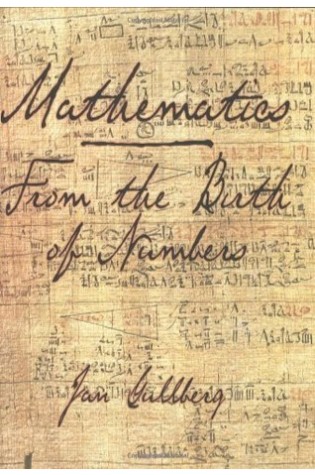
Lists It Appears On:
- Goodreads
- Math Blog
This extraordinary work takes the reader on a long and fascinating journey–from the dual invention of numbers and language, through the major realms of arithmetic, algebra, geometry, trigonometry, and calculus, to the final destination of differential equations, with excursions into mathematical logic, set theory, topology, fractals, probability, and assorted other mathematical byways. The book is unique among popular books on mathematics in combining an engaging, easy-to-read history of the subject with a comprehensive mathematical survey text. Intended, in the author’s words, “for the benefit of those who never studied the subject, those who think they have forgotten what they once learned, or those with a sincere desire for more knowledge,” it links mathematics to the humanities, linguistics, the natural sciences, and technology. Contains more than 1000 original technical illustrations, a multitude of reproductions from mathematical classics and other relevant works, and a generous sprinkling of humorous asides, ranging from limericks and tall stories to cartoons and decorative drawings.
23 .) Mouse Shapes written by Ellen Stoll Walsh
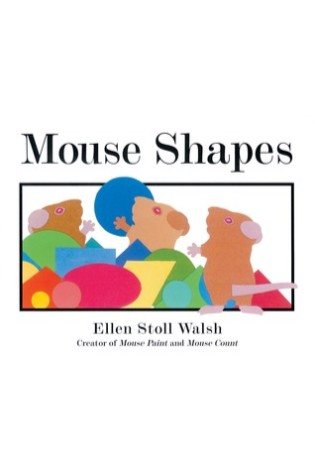
Lists It Appears On:
- Imagination Soup
- Top Notch Teaching
What can you make with one oval, two circles, and eight triangles? Just ask three clever mice–who even find a funny way to trick a sneaky cat. Ellen Stoll Walsh once again proves that she’s a master of concept books in this celebration of shapes, color, and innovation.
22 .) Multiplying Menace: The Revenge Of Rumpelstiltskin
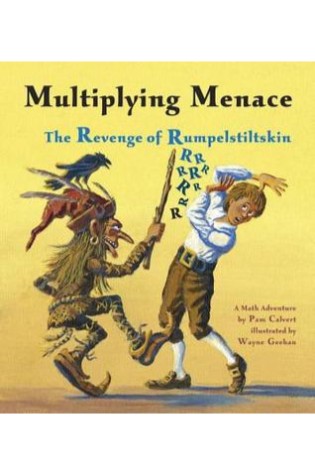
Lists It Appears On:
- Imagination Soup
- Very Well Family
Rumpelstiltskin is back! This time he’s making mischief with his multiplying stick. Can Peter unlock the secret of the stick in time to save the kingdom? Whimsical illustrations bring fun to multiplying whole numbers and fractions.
21 .) Number: The Language of Science written by Tobias Dantzig
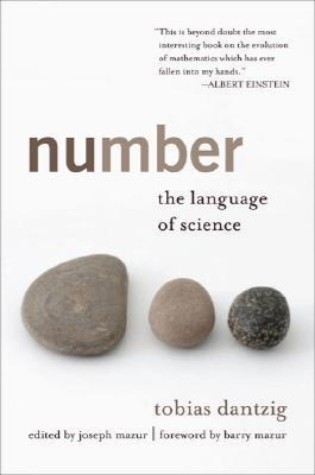
Lists It Appears On:
- Goodreads
- Ted
Number is an eloquent, accessible tour de force that reveals how the concept of number evolved from prehistoric times through the twentieth century. Tobias Dantzig shows that the development of math—from the invention of counting to the discovery of infinity—is a profoundly human story that progressed by “trying and erring, by groping and stumbling.” He shows how commerce, war, and religion led to advances in math, and he recounts the stories of individuals whose breakthroughs expanded the concept of number and created the mathematics that we know today.
20 .) One, Two, Three…Infinity written by George Gamow
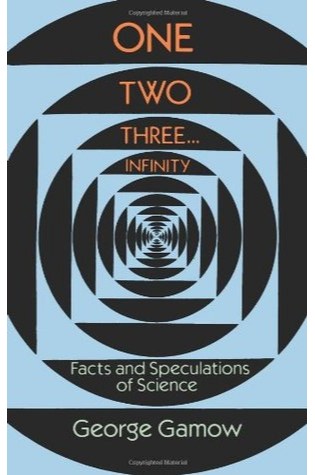
Lists It Appears On:
- Five Books
- Goodreads
One of the world’s foremost nuclear physicists (celebrated for his theory of radioactive decay, among other accomplishments), George Gamow possessed the unique ability of making the world of science accessible to the general reader. He brings that ability to bear in this delightful expedition through the problems, pleasures, and puzzles of modern science. Among the topics scrutinized with the author’s celebrated good humor and pedagogical prowess are the macrocosm and the microcosm, theory of numbers, relativity of space and time, entropy, genes, atomic structure, nuclear fission, and the origin of the solar system. In the pages of this book readers grapple with such crucial matters as whether it is possible to bend space, why a rocket shrinks, the “end of the world problem,” excursions into the fourth dimension, and a host of other tantalizing topics for the scientifically curious. Brimming with amusing anecdotes and provocative problems, One Two Three . . . Infinity also includes over 120 delightful pen-and-ink illustrations by the author, adding another dimension of good-natured charm to these wide-ranging explorations. Whatever your level of scientific expertise, chances are you’ll derive a great deal of pleasure, stimulation, and information from this unusual and imaginative book. It belongs in the library of anyone curious about the wonders of the scientific universe.
19 .) Sir Cumference and the Dragon of Pi
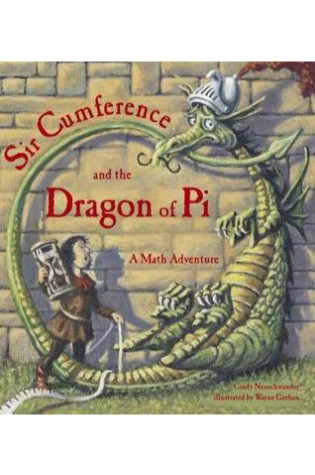
Lists It Appears On:
- Cross Talk
- Very Well Family
Sir Cumference, Lady Di of Ameter, and Radius are back in their second Math Adventure! This time, a potion has changed Sir Cumference into a fire-breathing dragon. Can Radius change him back? Join Radius on his quest through the castle to solve a riddle that will reveal the cure. It lies in discovering the magic number that is the same for all circles.
18 .) Sync: The Emerging Science of Spontaneous Order written by Steven H. Strogatz
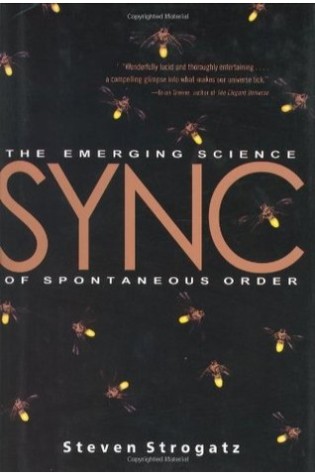
Lists It Appears On:
- Goodreads
- Ted
At the heart of the universe is a steady, insistent beat, the sound of cycles in sync. Along the tidal rivers of Malaysia, thousands of fireflies congregate and flash in unison; the moon spins in perfect resonance with its orbit around the earth; our hearts depend on the synchronous firing of ten thousand pacemaker cells. While the forces that synchronize the flashing of fireflies may seem to have nothing to do with our heart cells, there is in fact a deep connection. Synchrony is a science in its infancy, and Strogatz is a pioneer in this new frontier in which mathematicians and physicists attempt to pinpoint just how spontaneous order emerges from chaos. From underground caves in Texas where a French scientist spent six months alone tracking his sleep-wake cycle, to the home of a Dutch physicist who in 1665 discovered two of his pendulum clocks swinging in perfect time, this fascinating book spans disciplines, continents, and centuries. Engagingly written for readers of books such as Chaos and The Elegant Universe, Sync is a tour-de-force of nonfiction writing.
17 .) The Adventures of Penrose, the Mathematical Cat
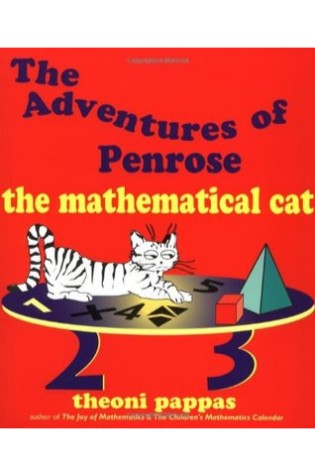
Lists It Appears On:
- Prodigy Game
- Very Well Family
Penrose, a cat with a knack for math, takes children on an adventurous tour of mathematical concepts from fractals to infinity.
16 .) The Colossal Book of Mathematics written by Martin Gardner
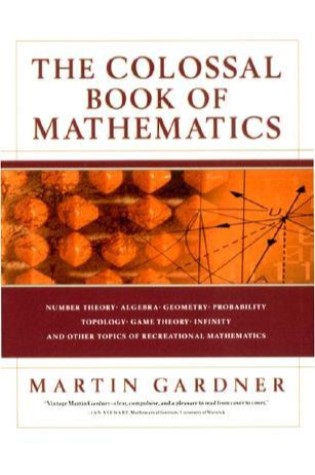
Lists It Appears On:
- Goodreads
- The Guardian
s/t: Classic Puzzles, Paradoxes & Problems Whether discussing hexaflexagons or number theory, Klein bottles or the essence of “nothing,” Martin Gardner has single-handedly created the field of “recreational mathematics.” The Colossal Book of Mathematics collects together Gardner’s most popular pieces from his legendary “Mathematical Games” column, which ran in Scientific American for twenty-five years. Gardner’s array of absorbing puzzles and mind-twisting paradoxes opens mathematics up to the world at large, inspiring people to see past numbers and formulas and experience the application of mathematical principles to the mysterious world around them. With articles on topics ranging from simple algebra to the twisting surfaces of Mobius strips, from an endless game of Bulgarian solitaire to the unreachable dream of time travel, this volume comprises a substantial and definitive monument to Gardner’s influence on mathematics, science, and culture.In its twelve sections, The Colossal Book of Math explores a wide range of areas, each startlingly illuminated by Gardner’s incisive expertise. Beginning with seemingly simple topics, Gardner expertly guides us through complicated and wondrous worlds: by way of basic algebra we contemplate the mesmerizing, often hilarious, linguistic and numerical possibilities of palindromes; using simple geometry, he dissects the principles of symmetry upon which the renowned mathematical artist M. C. Escher constructs his unique, dizzying universe. Gardner, like few thinkers today, melds a rigorous scientific skepticism with a profound artistic and imaginative impulse.
15 .) The Doorbell Rang written by Pat Hutchins
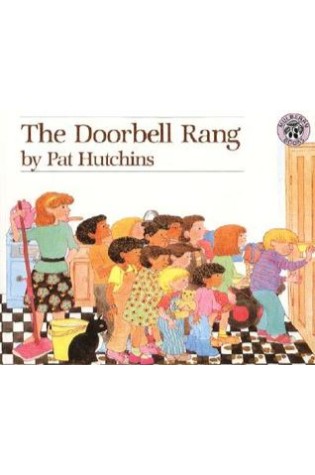
Lists It Appears On:
- Prodigy Game
- Top Notch Teaching
Each ring of the doorbell brings more friends to share the delicious cookies Ma has made in this beloved classic. This enjoyable read-aloud picture book about friendship, sharing, and cookies can also be used to introduce basic math concepts to young children. “Refreshing, enjoyable, and unpredictable.”—School Library Journal Pat Hutchins is the celebrated creator of numerous award-winning books for children, including Rosie’s Walk, Titch, and Don’t Forget the Bacon! The Doorbell Rang was named a Notable Book for Children by the American Library Association.
14 .) The Man Who Knew Infinity: A Life of the Genius Ramanujan written by Robert Kanigel
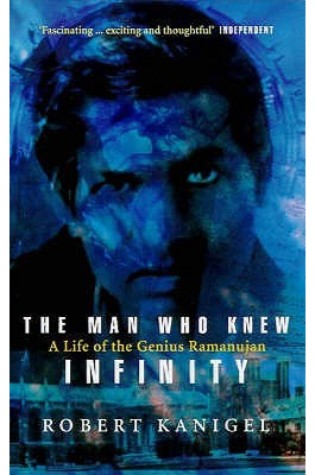
Lists It Appears On:
- Goodreads
- The Guardian
The tale of a relationship between a young Indian mathematics genius, Ramanujan, and his tutor at Cambridge University, G.H. Hardy, in the years before World War I. Through their eyes the reader is taken on a journey through numbers theory. Ramanujan would regularly telescope 12 steps of logic into two – the effect is said to be like Dr Watson in the train of some argument by Sherlock Holmes. The language of symbols and infinitely large (and small) regions of mathematics should be rendered with clarity for the general reader.
13 .) The Princeton Companion to Mathematics written by Timothy Gowers
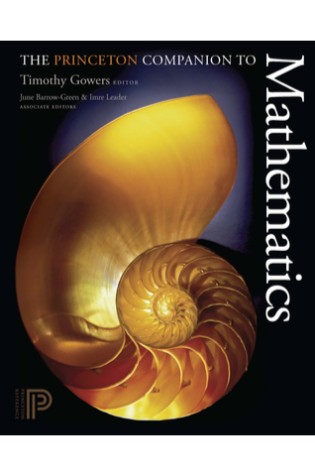
Lists It Appears On:
- Goodreads
- Math Blog
This is a one-of-a-kind reference for anyone with a serious interest in mathematics. Edited by Timothy Gowers, a recipient of the Fields Medal, it presents nearly two hundred entries, written especially for this book by some of the world’s leading mathematicians, that introduce basic mathematical tools and vocabulary; trace the development of modern mathematics; explain essential terms and concepts; examine core ideas in major areas of mathematics; describe the achievements of scores of famous mathematicians; explore the impact of mathematics on other disciplines such as biology, finance, and music–and much, much more. Unparalleled in its depth of coverage, The Princeton Companion to Mathematics surveys the most active and exciting branches of pure mathematics. Accessible in style, this is an indispensable resource for undergraduate and graduate students in mathematics as well as for researchers and scholars seeking to understand areas outside their specialties.
12 .) This Is Not a Maths Book
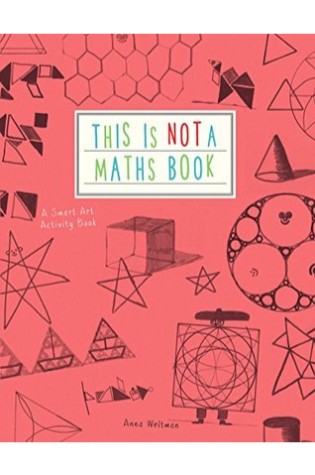
Lists It Appears On:
- Cross Talk
- Prodigy Game
11 .) Uno’s Garden written by Graeme Base
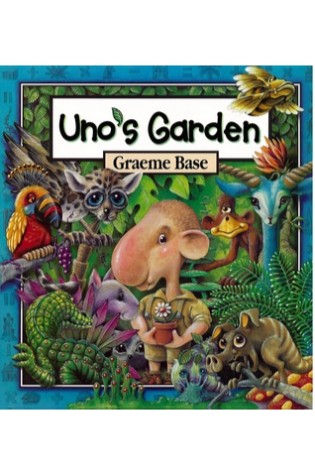
Lists It Appears On:
- Prodigy Game
- Top Notch Teaching
When Uno arrives in the forest one beautiful day, there are many fascinating and extraordinary animals there to greet him. And one entirely unexceptional Snortlepig. Uno loves the forest so much, he decides to live there. But, in time, a little village grows up around his house. Then a town, then a city. . . and soon Uno realises that the animals and plants have begun to disappear. . .
10 .) What Is Mathematics?: An Elementary Approach to Ideas and Methods written by Richard Courant
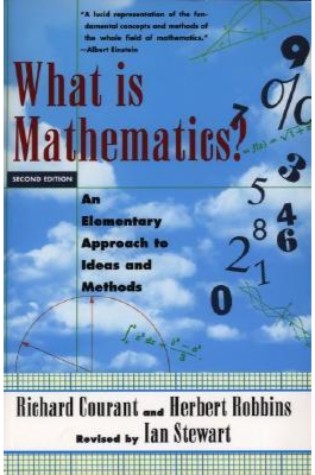
Lists It Appears On:
- Goodreads
- Math Blog
For more than two thousand years a familiarity with mathematics has been regarded as an indispensable part of the intellectual equipment of every cultured person. Today, unfortunately, the traditional place of mathematics in education is in grave danger. The teaching and learning of mathematics has degenerated into the realm of rote memorization, the outcome of which leads to satisfactory formal ability but does not lead to real understanding or to greater intellectual independence. This new edition of Richard Courant’s and Herbert Robbins’s classic work seeks to address this problem. Its goal is to put the meaning back into mathematics. Written for beginners and scholars, for students and teachers, for philosophers and engineers, What is Mathematics? Second Edition is a sparkling collection of mathematical gems that offers an entertaining and accessible portrait of the mathematical world. Covering everything from natural numbers and the number system to geometrical constructions and projective geometry, from topology and calculus to matters of principle and the Continuum Hypothesis, this fascinating survey allows readers to delve into mathematics as an organic whole rather than an empty drill in problem solving. With chapters largely independent of one another and sections that lead upward from basic to more advanced discussions, readers can easily pick and choose areas of particular interest without impairing their understanding of subsequent parts. Brought up to date with a new chapter by Ian Stewart, What is Mathematics? Second Edition offers new insights into recent mathematical developments and describes proofs of the Four-Color Theorem and Fermat’s Last Theorem, problems that were still open when Courant and Robbins wrote this masterpiece, but ones that have since been solved. Formal mathematics is like spelling and grammar – a matter of the correct application of local rules.
9 .) Zero: The Biography of a Dangerous Idea written by Charles Seife
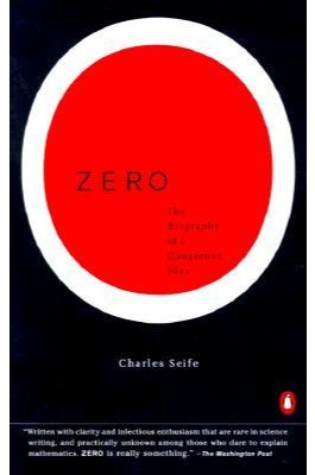
Lists It Appears On:
- Goodreads
- Ted
The Babylonians invented it, the Greeks banned it, the Hindus worshipped it, and the Church used it to fend off heretics. For centuries, the power of zero savored of the demonic; once harnessed, it became the most important tool in mathematics. Zero follows this number from its birth as an Eastern philosophical concept to its struggle for acceptance in Europe and its apotheosis as the mystery of the black hole. Today, zero lies at the heart of one of the biggest scientific controversies of all time, the quest for the theory of everything.
8 .) Anno’s Mysterious Multiplying Jar

Lists It Appears On:
- Cross Talk
- Imagination Soup
- Read Brightly
7 .) Flatland: A Romance Of Many Dimensions written by Edwin A. Abbott
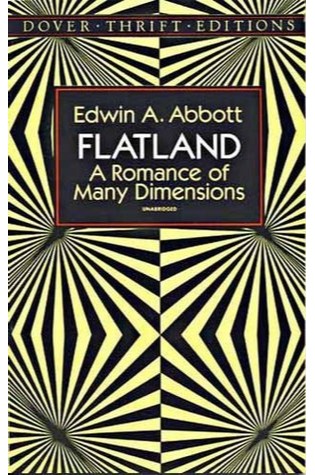
Lists It Appears On:
- Barnes And Noble
- Book Riot
- Goodreads
This masterpiece of science (and mathematical) fiction is a delightfully unique and highly entertaining satire that has charmed readers for more than 100 years. The work of English clergyman, educator and Shakespearean scholar Edwin A. Abbott (1838-1926), it describes the journeys of A. Square [sic – ed.], a mathematician and resident of the two-dimensional Flatland, where women-thin, straight lines-are the lowliest of shapes, and where men may have any number of sides, depending on their social status. Through strange occurrences that bring him into contact with a host of geometric forms, Square has adventures in Spaceland (three dimensions), Lineland (one dimension) and Pointland (no dimensions) and ultimately entertains thoughts of visiting a land of four dimensions—a revolutionary idea for which he is returned to his two-dimensional world. Charmingly illustrated by the author, Flatland is not only fascinating reading, it is still a first-rate fictional introduction to the concept of the multiple dimensions of space.
6 .) Gödel, Escher, Bach: An Eternal Golden Braid written by Douglas R. Hofstadter
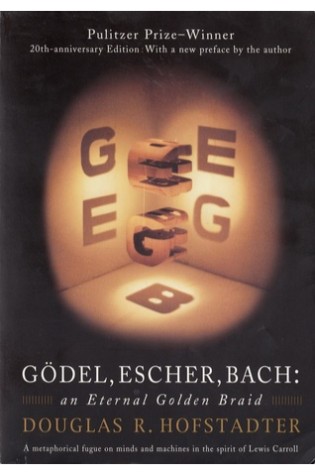
Lists It Appears On:
- Goodreads
- The Guardian
- Wikipedia
Douglas Hofstadter’s book is concerned directly with the nature of “maps” or links between formal systems. However, according to Hofstadter, the formal system that underlies all mental activity transcends the system that supports it. If life can grow out of the formal chemical substrate of the cell, if consciousness can emerge out of a formal system of firing neurons, then so too will computers attain human intelligence. Gödel, Escher, Bach is a wonderful exploration of fascinating ideas at the heart of cognitive science: meaning, reduction, recursion, and much more.
5 .) Math Curse
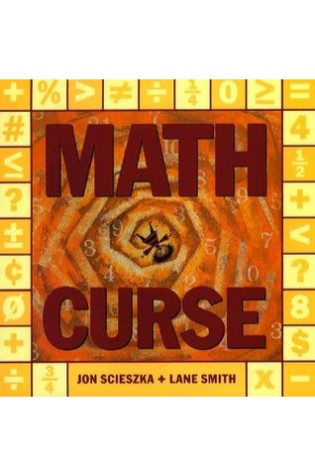
Lists It Appears On:
- Read Brightly
- Self Sufficent Kids
- Very Well Family
Did you ever wake up to one of those days where everything is a problem? You have 10 things to do, but only 30 minutes until your bus leaves. Is there enough time? You have 3 shirts and 2 pairs of pants. Can you make 1 good outfit? Then you start to wonder: Why does everything have to be such a problem? Why do 2 apples always have to be added to 5 oranges? Why do 4 kids always have to divide 12 marbles? Why can’t you just keep 10 cookies without someone taking 3 away? Why? Because you’re a victim of the Math Curse. That’s why. But don’t despair. This is one girl’s story of how that curse can be broken.
4 .) Sir Cumference and the First Round Table
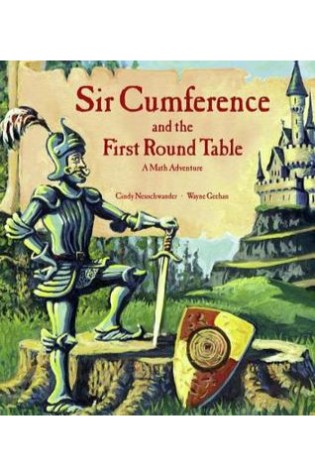
Lists It Appears On:
- Imagination Soup
- Self Sufficent Kids
- Very Well Family
Join Sir Cumference, Lady Di of Ameter, and their son Radius for wordplay, puns, and problem solving in this geometry-packed math adventure. King Arthur was a good ruler, but now he needs a good ruler. What would you do if the neighboring kingdom were threatening war? Naturally, you’d call your strongest and bravest knights together to come up with a solution. But when your conference table causes more problems than the threat of your enemy, you need expert help. Enter Sir Cumference, his wife Lady Di of Ameter, and their son Radius. With the help of the carpenter, Geo of Metry, this sharp-minded team designs the perfect table conducive to discussing the perfect plan for peace.
3 .) Spaghetti And Meatballs For All written by Marilyn Burns and Debbie Tilley
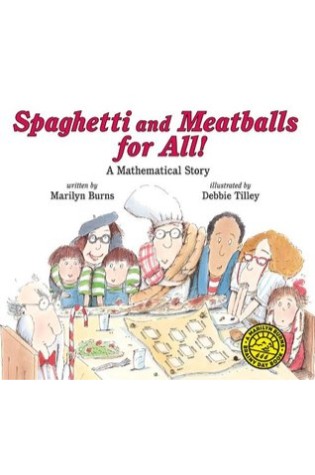
Lists It Appears On:
- Imagination Soup
- Self Sufficent Kids
- Top Notch Teaching
Mr. and Mrs. Comfort have arranged tables and chairs to seat 32 people at their family reunion. But the guests have their own ideas for seating. Area and perimeter come alive as the family makes room for everyone. Used in Math By All Means: Area and Perimeter, Grades 5-6.
2 .) The Number Devil: A Mathematical Adventure written by Hans Magnus Enzensberger
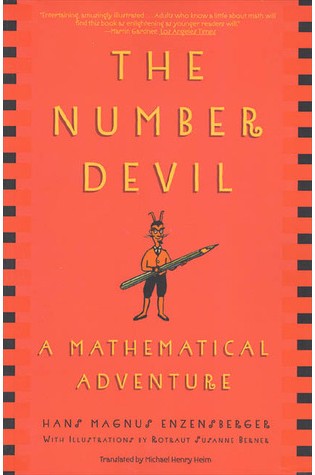
Lists It Appears On:
- Goodreads
- Read Brightly
- Very Well Family
The international best-seller that makes mathematics a thrilling exploration. In twelve dreams, Robert, a boy who hates math, meets a Number Devil, who leads him to discover the amazing world of numbers: infinite numbers, prime numbers, Fibonacci numbers, numbers that magically appear in triangles, and numbers that expand without. As we dream with him, we are taken further and further into mathematical theory, where ideas eventually take flight, until everyone – from those who fumble over fractions to those who solve complex equations in their heads – winds up marveling at what numbers can do. Hans Magnus Enzensberger is a true polymath, the kind of superb intellectual who loves thinking and marshals all of his charm and wit to share his passions with the world. In The Number Devil, he brings together the surreal logic of Alice in Wonderland and the existential geometry of Flatland with the kind of math everyone would love, if only they had a number devil to teach it to them.
1 .) The Grapes Of Math
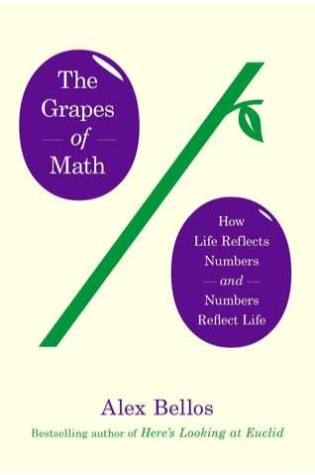
Lists It Appears On:
- Cross Talk
- Prodigy Game
- Self Sufficent Kids
- Very Well Family
From the bestselling author of Here’s Looking at Euclid, a dazzling new book that turns even the most complex math into a brilliantly entertaining narrative. From triangles, rotations and power laws, to cones, curves and the dreaded calculus, Alex takes you on a journey of mathematical discovery with his signature wit and limitless enthusiasm. He sifts through over 30,000 survey submissions to uncover the world’s favourite number, and meets a mathematician who looks for universes in his garage. He attends the World Mathematical Congress in India, and visits the engineer who designed the first roller-coaster loop. Get hooked on math as Alex delves deep into humankind’s turbulent relationship with numbers, and reveals how they have shaped the world we live in.
The 350 Additional Best Math Books
| # | Books | Authors | Lists |
| 41 | ;International Mathematical Olympiad 1959-1999 | Istvan Reiman | Tanya Hovanova |
| 42 | 1 Big Salad: a Delicious Counting Book | Imagination Soup | |
| 43 | 10 Fat Turkeys | A Spirited Mind | |
| 44 | 101 Growth Mindset Quotes for Kids | Mash-Up Math | |
| 45 | 12 Ways to Get to 11 | Cross Talk | |
| 46 | 7 x 9 = Trouble | Self Sufficent Kids | |
| 47 | A Beautiful Mind | Sylvia Nasar | Goodreads |
| 48 | A Brief History of Time | Stephen Hawking | Goodreads |
| 49 | A Course of Pure Mathematics | Wikipedia | |
| 50 | A Disappearing Number | Simon McBurney | Five Books |
| 51 | A First Course in Complex Analysis With Applications | Math Blog | |
| 52 | A Gebra Named Al | Very Well Family | |
| 53 | A Girl Named Digit | Annabel Monaghan | Book Riot |
| 54 | A History of π | Petr Beckmann | Goodreads |
| 55 | A Hundred Billion Trillion Stars | KQED | |
| 56 | A Mathematical Introduction to Logic, Second Edition | Math Blog | |
| 57 | A Mathematician’s Lament: How School Cheats Us Out of Our Most Fascinating and Imaginative Art Form | Paul Lockhart | Goodreads |
| 58 | A Place for Zero | Imagination Soup | |
| 59 | A Super-Sneaky, Double-Crossing, Up, Down, Round & Round Maze Book | Larry Evans | Tanya Hovanova |
| 60 | A Very Improbable Story | Self Sufficent Kids | |
| 61 | Absolutely One Thing | KQED | |
| 62 | Aha! Gotcha | Martin Gardner | Tanya Hovanova |
| 63 | Algebra | Wikipedia | |
| 64 | Algebraic Geometry | Wikipedia | |
| 65 | Alice’s Adventures In Wonderland and Through The Looking Glass | Lewis Carroll. | Book Riot |
| 66 | Amanda Bean’s Amazing Dream | Imagination Soup | |
| 67 | An Abundance Of Katherines | John Green | Book Riot |
| 68 | An Imaginary Tale: The Story of the Square Root of Minus One | Paul J. Nahin | Goodreads |
| 69 | An Introduction to Probability Theory and Its Applications | Math Blog | |
| 70 | An Invitation to Modern Number Theory | Math Blog | |
| 71 | Analysis situs | Wikipedia | |
| 72 | Anno’s Counting Book | Imagination Soup | |
| 73 | Arcadia | Tom Stoppard | Book Riot |
| 74 | Archimedes Palimpsest | Wikipedia | |
| 75 | Arithmetick: or, The Grounde of Arts | Wikipedia | |
| 76 | Aryabhatiya | Wikipedia | |
| 77 | Asimov on Numbers | Isaac Asimov | Goodreads |
| 78 | Baby Goes to Market | KQED | |
| 79 | Basic Mathematics | Math Blog | |
| 80 | Baudhayana Sulba Sutra | Wikipedia | |
| 81 | Begriffsschrift | Wikipedia | |
| 82 | Brāhmasphuṭasiddhānta | Wikipedia | |
| 83 | By Trudy Harris | Cross Talk | |
| 84 | Calculus Made Easy | Math Blog | |
| 85 | Calculus On Manifolds | Math Blog | |
| 86 | Calculus, Vol. 2 | Math Blog | |
| 87 | Capacity | Cross Talk | |
| 88 | Cardinal and Ordinal Numbers | Wikipedia | |
| 89 | Chaos: Making a New Science | James Gleick | Goodreads |
| 90 | Classic Brainteasers | Tanya Hovanova | |
| 91 | Classic Set Theory for Guided Independent Study | Math Blog | |
| 92 | Clocks and More Clocks | Pat Hutchins. | A Spirited Mind |
| 93 | Cocker’s Arithmetick | Wikipedia | |
| 94 | Combinatorics and Graph Theory (2nd edition) | Math Blog | |
| 95 | Complex analysis | Wikipedia | |
| 96 | Computational Science and Engineering | Math Blog | |
| 97 | Concepts of Modern Mathematics | Ian Stewart | Goodreads |
| 98 | Concrete Mathematics: A Foundation for Computer Science | Ronald L. Graham | Goodreads |
| 99 | Contemporary Abstract Algebra | Math Blog | |
| 100 | Cool Math | Christy Maganzini | Tanya Hovanova |
| 101 | Counting Crocodiles | Self Sufficent Kids | |
| 102 | Counting On Frank | Rod Clement | Top Notch Teaching |
| 103 | De fractionibus continuis dissertatio | Wikipedia | |
| 104 | Deep Learning | KD Nuggets | |
| 105 | Diaspora: A Novel | Barnes And Noble | |
| 106 | Differential Equations and Their Applications | Math Blog | |
| 107 | Differential geometry | Wikipedia | |
| 108 | Disclosure | Very Well Family | |
| 109 | Disquisitiones Arithmeticae | Wikipedia | |
| 110 | Does God Play Dice?: The New Mathematics of Chaos | Ian Stewart | Goodreads |
| 111 | Dr. Euler’s Fabulous Formula: Cures Many Mathematical Ills | Paul J. Nahin | Goodreads |
| 112 | e: the Story of a Number | Eli Maor | Goodreads |
| 113 | Elementary Number Theory | Math Blog | |
| 114 | Éléments de géométrie algébrique | Wikipedia | |
| 115 | Éléments de mathématique | Wikipedia | |
| 116 | Encyclopedia of Mathematics | Math Blog | |
| 117 | Endlichkeitssätze für abelsche Varietäten über Zahlkörpern | Wikipedia | |
| 118 | Equal Shmequal | Imagination Soup | |
| 119 | Equilibrium Points in N-person Games | Wikipedia | |
| 120 | Euclid in the Rainforest | Joseph Mazur | The Guardian |
| 121 | Euclid’s Window: The Story of Geometry from Parallel Lines to Hyperspace | Leonard Mlodinow | Goodreads |
| 122 | Euler’s Gem: The Polyhedron Formula and the Birth of Topology | David S. Richeson | Goodreads |
| 123 | Even Steven and Odd Todd | Imagination Soup | |
| 124 | Everything and More: A Compact History of Infinity | David Foster Wallace | Goodreads |
| 125 | Faisceaux Algébriques Cohérents | Wikipedia | |
| 126 | Family Math | Prodigy Game | |
| 127 | Fannie in the Kitchen: The Whole Story from Soup to Nuts of How Fannie Farmer Invented Recipes with Precise Measurements | Imagination Soup | |
| 128 | Fantasia Mathematica | Barnes And Noble | |
| 129 | Fermat’s Enigma: The Epic Quest to Solve the World’s Greatest Mathematical Problem | Simon Singh | Goodreads |
| 130 | Fermat’s Last Theorem: Unlocking the Secret of an Ancient Mathematical Problem | Amir D. Aczel | Goodreads |
| 131 | Fifty Challenging Problems in Probability with Solutions | Math Blog | |
| 132 | First Six Books of the Elements of Euclid | Euclid, with annotations by John Casey | Ted |
| 133 | Flatterland: Like Flatland Only More So | Ian Stewart | Goodreads |
| 134 | Fooled by Randomness: The Hidden Role of Chance in Life and in the Markets | Nassim Nicholas Taleb | Goodreads |
| 135 | Formulario mathematico | Wikipedia | |
| 136 | Foundation (Foundation Series #1) | Barnes And Noble | |
| 137 | Foundations of Differential Geometry | Wikipedia | |
| 138 | Four Colours Suffice | Robin Wilson | The Guardian |
| 139 | Fourier analysis | Wikipedia | |
| 140 | Fourier Analysis in Number Fields and Hecke’s Zeta-Functions | Wikipedia | |
| 141 | Fractals, Googols, and Other Mathematical Tales | Self Sufficent Kids | |
| 142 | Fraction Fun | Self Sufficent Kids | |
| 143 | Fractions, Decimals, and Percents | Self Sufficent Kids | |
| 144 | From Here to Infinity | Ian Stewart | Goodreads |
| 145 | Functional analysis | Wikipedia | |
| 146 | G Is for Googol | Prodigy Game | |
| 147 | Games of Life | Karl Sigmund | The Guardian |
| 148 | General Theory of Natural Equivalences | Wikipedia | |
| 149 | General Topology | Wikipedia | |
| 150 | Genius: The Game | KQED | |
| 151 | Géométrie Algébrique et Géométrie Analytique | Wikipedia | |
| 152 | Geometry | Wikipedia | |
| 153 | Geometry and the Imagination | David Hilbert | Goodreads |
| 154 | Geometry Revisited | H. S. M. Coxeter and Samuel L. Greitzer | Tanya Hovanova |
| 155 | Giant Pumpkin Suite | KQED | |
| 156 | Go Figure! | Self Sufficent Kids | |
| 157 | Go, Dog. Go! | A Spirited Mind | |
| 158 | God Created the Integers: The Mathematical Breakthroughs That Changed History | Stephen Hawking | Goodreads |
| 159 | Gödel’s Proof | Ernest Nagel | Goodreads |
| 160 | Grandfather Tang’s Story | Read Brightly | |
| 161 | Grapes of Math | Imagination Soup | |
| 162 | Graph theory | Wikipedia | |
| 163 | Grundlagen der Geometrie | Wikipedia | |
| 164 | Grundzüge der Mengenlehre | Wikipedia | |
| 165 | Have You Seen My Dragon? | KQED | |
| 166 | Heard on The Street: Quantitative Questions from Wall Street Job Interviews | Timothy Falcon Crack | Tanya Hovanova |
| 167 | Here’s Looking at Euclid: A Surprising Excursion Through the Astonishing World of Math | Alex Bellos | Goodreads |
| 168 | Hexaflexagons and Other Mathematical Diversions | Martin Gardner | Goodreads |
| 169 | Hidden Figures: The American Dream and the Untold Story of the Black Women Mathematicians Who Helped Win the Space Race | KQED | |
| 170 | Higher Topos Theory | Wikipedia | |
| 171 | Hodge Theory and Complex Algebraic Geometry I | Wikipedia | |
| 172 | Hodge Theory and Complex Algebraic Geometry II | Wikipedia | |
| 173 | How Big is a Foot | Imagination Soup | |
| 174 | How Do Dinosaurs series | A Spirited Mind | |
| 175 | How Long Is the Coast of Britain? Statistical Self-Similarity and Fractional Dimension | Wikipedia | |
| 176 | How Many Jelly Beans? | Imagination Soup | |
| 177 | How Not to Be Wrong: The Power of Mathematical Thinking | Jordan Ellenberg | Ted |
| 178 | How to Cut a Cake: And Other Mathematical Conundrums | Ian Stewart | Goodreads |
| 179 | How to Lie with Statistics | Darrell Huff | Goodreads |
| 180 | How to Solve It: A New Aspect of Mathematical Method | George Pólya | Goodreads |
| 181 | How to Take a Chance | Darrell Huff | Goodreads |
| 182 | How Would You Move Mount Fuji? Microsoft’s Cult of the Puzzle – How the World’s Smartest Company Selects the Most Creative Thinkers | William Poundstone | Tanya Hovanova |
| 183 | I Am a Strange Loop | Douglas R. Hofstadter | Goodreads |
| 184 | I spy | Tanya Hovanova | |
| 185 | Impossibility: The Limits of Science and the Science of Limits | John D. Barrow | Goodreads |
| 186 | In Pursuit of the Unknown: 17 Equations That Changed the World | Ian Stewart | Goodreads |
| 187 | Inch by Inch | Imagination Soup | |
| 188 | Indiscrete Thoughts | Gian-Carlo Rota | Goodreads |
| 189 | Information Science | Math Blog | |
| 190 | Introductio in analysin infinitorum | Wikipedia | |
| 191 | Introduction to Algorithms, Third Edition | Math Blog | |
| 192 | Introduction to Coding and Information Theory | Math Blog | |
| 193 | Introduction to Probability Models, Tenth Edition | Math Blog | |
| 194 | Introduction to Topology and Modern Analysis | Math Blog | |
| 195 | Introduction to Topology: Third Edition | Math Blog | |
| 196 | Introductory Statistics | Math Blog | |
| 197 | Journey through Genius: The Great Theorems of Mathematics | William Dunham | Goodreads |
| 198 | Kings Chessboard | Imagination Soup | |
| 199 | L’anneau d’homologie d’une représentation, Structure de l’anneau d’homologie d’une représentation | Wikipedia | |
| 200 | La conjecture de Weil. I. | Wikipedia | |
| 201 | La Géométrie | Wikipedia | |
| 202 | Labyrinths of Reason: Paradox, Puzzles and the Frailty of Knowledge | William Poundstone | Goodreads |
| 203 | Last Call | Barnes And Noble | |
| 204 | Le lemme fondamental pour les algèbres de Lie | Wikipedia | |
| 205 | Le théorème de Riemann–Roch, d’après A. Grothendieck | Wikipedia | |
| 206 | Letters to a Young Mathematician | Ian Stewart | Goodreads |
| 207 | Light | Barnes And Noble | |
| 208 | Līlāvatī, Siddhānta Shiromani and Bijaganita | Wikipedia | |
| 209 | Linear Algebra Done Right | Math Blog | |
| 210 | Lines and Curves: A Practical Geometry Handbook | Victor Gutenmacher and N.B. Vasilyev | Tanya Hovanova |
| 211 | Little Counting Book | A Spirited Mind | |
| 212 | Logic puzzles | Mark Fowler | Tanya Hovanova |
| 213 | Longitude: The True Story of a Lone Genius Who Solved the Greatest Scientific Problem of His Time | Dava Sobel | Goodreads |
| 214 | Love and Math: The Heart of Hidden Reality | Edward Frenkel | Goodreads |
| 215 | Machine Learning: An Algorithmic Perspective, Second Edition (Chapman & Hall/Crc Machine Learning & Pattern Recognition) | KD Nuggets | |
| 216 | Machine Learning: The Art and Science of Algorithms that Make Sense of Data | KD Nuggets | |
| 217 | Math and Magic in Wonderland | Lilac Mohr | Goodreads |
| 218 | Math Dictionary: Homework Help for Families | Prodigy Game | |
| 219 | Math Fables | Self Sufficent Kids | |
| 220 | Math, Better Explained: Learn to Unlock Your Math Intuition | Kalid Azad | Goodreads |
| 221 | Mathematical Methods in the Physical Sciences | Math Blog | |
| 222 | Mathematical Methods: For Students of Physics and Related Fields | Math Blog | |
| 223 | Mathematical Mind-Benders | Tanya Hovanova | |
| 224 | Mathematical Mindsets: Unleashing Students’ Potential through Creative Math, Inspiring Messages and Innovative Teaching | Mash-Up Math | |
| 225 | Mathematical Mysteries | Calvin C. Clawson | Goodreads |
| 226 | Mathematical Olympiad Challenges | Titu Andreescu | Tanya Hovanova |
| 227 | Mathematical Puzzles | Peter Winkler | Tanya Hovanova |
| 228 | Mathematical Sorcery | Calvin C. Clawson | Goodreads |
| 229 | Mathematicians: An Outer View of the Inner World | Math Blog | |
| 230 | Mathematics and its History | Math Blog | |
| 231 | Mathematics and Sex | Clio Cresswell | Tanya Hovanova |
| 232 | Mathematics Form and Function | Saunders Mac Lane | Goodreads |
| 233 | Mathematics: A Very Short Introduction | Timothy Gowers | Goodreads |
| 234 | Mathematics: Is God Silent? | James Nickel | Goodreads |
| 235 | Mathematics: The Science of Patterns | Prodigy Game | |
| 236 | Mathenauts: Tales of Mathematical Wonder edited | Rudy Rucker | The Guardian |
| 237 | Measurement | Paul Lockhart | Ted |
| 238 | Measuring Penny | Imagination Soup | |
| 239 | Men of Mathematics | Eric Temple Bell | Goodreads |
| 240 | Millions of Cats | Wanda Gág | Book Riot |
| 241 | Mind for Mathematics, A: Meaningful Teaching and Learning in Elementary Classrooms—useful classroom tactics and examples for K–6 math | Mash-Up Math | |
| 242 | Mindset: The New Psychology of Success | Mash-Up Math | |
| 243 | Moderne Algebra | Wikipedia | |
| 244 | Modular Elliptic Curves and Fermat’s Last Theorem | Wikipedia | |
| 245 | Monster’s Battle Book 1 | Othen Donald Dale Cummings | Goodreads |
| 246 | Mummy Math: An Adventure in Geometry | Imagination Soup | |
| 247 | My Brain is Open: The Mathematical Journeys of Paul Erdős | Bruce Schechter | Goodreads |
| 248 | My Even Day | Doris Fisher and Dani Sneed | Top Notch Teaching |
| 249 | Naive Set Theory | Wikipedia | |
| 250 | Ninefox Gambit (Machineries of Empire Series #1) | Barnes And Noble | |
| 251 | Nonlinear Dynamics and Chaos: With Applications to Physics, Biology, Chemistry, and Engineering | Steven H. Strogatz | Goodreads |
| 252 | Number Theory, An approach through history from Hammurapi to Legendre | Wikipedia | |
| 253 | Numerical Analysis with CD-ROM | Math Blog | |
| 254 | Numerical Recipes 3rd Edition: The Art of Scientific Computing | Math Blog | |
| 255 | On Numbers and Games | Wikipedia | |
| 256 | On sets of integers containing no k elements in arithmetic progression | Wikipedia | |
| 257 | One Grain of Rice: A Mathematical Folktale | Imagination Soup | |
| 258 | One Hundred Days of Cool | Stuart Murphy | Top Notch Teaching |
| 259 | One Lonely Sea Horse | A Spirited Mind | |
| 260 | One Odd Day | Doris Fisher and Dani Sneed | Top Notch Teaching |
| 261 | One Was Johnny | A Spirited Mind | |
| 262 | Optimization | Wikipedia | |
| 263 | Pattern Classification by Richard O Duda (2007-12-24) | KD Nuggets | |
| 264 | Pattern Fish | Cross Talk | |
| 265 | Pattern Recognition and Machine Learning (Information Science and Statistics) | KD Nuggets | |
| 266 | Perfect Rigor: A Genius and the Mathematical Breakthrough of the Century | Masha Gessen | Goodreads |
| 267 | PopCo | Scarlett Thomas | Tanya Hovanova |
| 268 | Precalculus Mathematics in a Nutshell: Geometry, Algebra, Trigonometry | Math Blog | |
| 269 | Prime Obsession: Bernhard Riemann and the Greatest Unsolved Problem in Mathematics | John Derbyshire | Goodreads |
| 270 | Principia Mathematica | Wikipedia | |
| 271 | Principles and Techniques in Combinatorics | Math Blog | |
| 272 | Principles of Mathematical Analysis, Third Edition | Math Blog | |
| 273 | Prisoner’s Dilemma | William Poundstone | Goodreads |
| 274 | Probability Theory: The Logic of Science | Math Blog | |
| 275 | Proofs from THE BOOK | Martin Aigner | Goodreads |
| 276 | Quack and Count | Imagination Soup | |
| 277 | Quelques propriétés globales des variétés differentiables | Wikipedia | |
| 278 | Real Analysis | Math Blog | |
| 279 | Real and Complex Analysis | Math Blog | |
| 280 | Really Big Numbers | KQED | |
| 281 | Recherches d’Arithmétique | Wikipedia | |
| 282 | Regular Polytopes | Wikipedia | |
| 283 | Relativity: The Special and the General Theory | Albert Einstein | Goodreads |
| 284 | Rhind Mathematical Papyrus | Wikipedia | |
| 285 | Round Trip | Prodigy Game | |
| 286 | Sacred Mathematics: Japanese Temple Geometry | Math Blog | |
| 287 | Secret Coders #1: Get with the Program | KQED | |
| 288 | Séminaire de géométrie algébrique | Wikipedia | |
| 289 | Set Theory: An Introduction to Independence Proofs | Wikipedia | |
| 290 | Sheep Won’t Sleep: Counting by 2’s, 5’s, and 10’s | KQED | |
| 291 | Sir Cumference and All the King’s Tens | Self Sufficent Kids | |
| 292 | Sir Cumference and the Great Knight of Angleland | Imagination Soup | |
| 293 | Sir Cumference Series | Prodigy Game | |
| 294 | Solve This | James S. Tanton | Tanya Hovanova |
| 295 | Sort it Out! | Imagination Soup | |
| 296 | Statistics in Plain English, Third Edition | Math Blog | |
| 297 | Statistics, 4th Edition | Math Blog | |
| 298 | Surely You’re Joking, Mr. Feynman!: Adventures of a Curious Character | Richard Feynman | Goodreads |
| 299 | Surya Siddhanta | Wikipedia | |
| 300 | Synopsis of Pure Mathematics | Wikipedia | |
| 301 | Systems of Logic Based on Ordinals | Wikipedia | |
| 302 | Tea for Me, Tea for You | A Spirited Mind | |
| 303 | Telling Time | Imagination Soup | |
| 304 | Ten Apples Up On Top! | Self Sufficent Kids | |
| 305 | Ten Black Dots | Imagination Soup | |
| 306 | The Archimedes Codex: How a Medieval Prayer Book Is Revealing the True Genius of Antiquity’s Greatest Scientist | Reviel Netz | Goodreads |
| 307 | The Art and Craft of Problem Solving | Paul Zeitz | Tanya Hovanova |
| 308 | The Art of Computer Programming, Volumes 1-3 Boxed Set | Math Blog | |
| 309 | The Black Swan: The Impact of the Highly Improbable | Nassim Nicholas Taleb | Goodreads |
| 310 | The Book of Classic Board Games | Klutz Press | Tanya Hovanova |
| 311 | The Boy Who Loved Math | Imagination Soup | |
| 312 | The Calculus Lifesaver: All the Tools You Need to Excel at Calculus | Math Blog | |
| 313 | The Calculus Wars | Jason Socrates Bardi | Goodreads |
| 314 | The Chess Mysteries of Sherlock Holmes | Raymond M. Smullyan | Tanya Hovanova |
| 315 | The Chess Mysteries of the Arabian Knights | Raymond M. Smullyan | Tanya Hovanova |
| 316 | The Code Book: The Science of Secrecy from Ancient Egypt to Quantum Cryptography | Simon Singh | Goodreads |
| 317 | The Conics | Wikipedia | |
| 318 | The consistency of the axiom of choice and of the generalized continuum-hypothesis with the axioms of set theory | Wikipedia | |
| 319 | The Curious Incident Of The Dog In The Night Time | Mark Haddon | Book Riot |
| 320 | The Dot & the Line | Cross Talk | |
| 321 | The Drunkard’s Walk: How Randomness Rules Our Lives | Leonard Mlodinow | Goodreads |
| 322 | The Elements of Statistical Learning: Data Mining, Inference, and Prediction, Second Edition | KD Nuggets | |
| 323 | The Emperor’s New Mind: Concerning Computers, Minds and the Laws of Physics | Roger Penrose | Goodreads |
| 324 | The Equation That Couldn’t Be Solved: How Mathematical Genius Discovered the Language of Symmetry | Mario Livio | Goodreads |
| 325 | The Four Pillars of Geometry | Math Blog | |
| 326 | The geometry and cohomology of some simple Shimura varieties | Wikipedia | |
| 327 | The Glass Bead Game | Herman Hesse | Five Books |
| 328 | The Golden Ratio: The Story of Phi, the World’s Most Astonishing Number | Mario Livio | Goodreads |
| 329 | The Grouchy Ladybug | A Spirited Mind | |
| 330 | The Growth Mindset Coach: A Teacher’s Month-by-Month Handbook for Empowering Students to Achieve | Mash-Up Math | |
| 331 | The Housekeeper and the Professor | Yoko Ogawa | Book Riot |
| 332 | The Independence of the Continuum Hypothesis | Wikipedia | |
| 333 | The Infinite Book: A Short Guide to the Boundless, Timeless and Endless | John D. Barrow | Goodreads |
| 334 | The Joy of x: A Guided Tour of Math, from One to Infinity | Steven H. Strogatz | Goodreads |
| 335 | The Laws of Thought | Wikipedia | |
| 336 | The Library of Babel and Other Stories | Barnes And Noble | |
| 337 | The Magic Show | Mark Setteducati | Tanya Hovanova |
| 338 | The Man Who Counted: A Collection of Mathematical Adventures | Malba Tahan | Goodreads |
| 339 | The Man Who Knew Too Much: Alan Turing and the Invention of the Computer | David Leavitt | Goodreads |
| 340 | The Man Who Loved Only Numbers: The Story of Paul Erdős and the Search for Mathematical Truth | Paul Hoffman | Goodreads |
| 341 | The Math Book: From Pythagoras to the 57th Dimension, 250 Milestones in the History of Mathematics | Clifford A. Pickover | Goodreads |
| 342 | The Math Olympian | Richard Hoshino | Goodreads |
| 343 | The Math Wiz | Self Sufficent Kids | |
| 344 | The Mathematical Experience | Philip J. Davis | Goodreads |
| 345 | The Mathematical Principles of Natural Philosophy | Isaac Newton | The Guardian |
| 346 | The Mathematical Universe: An Alphabetical Journey Through the Great Proofs, Problems, and Personalities | William Dunham | Goodreads |
| 347 | The Mismeasure of Man | Stephen Jay Gould | Goodreads |
| 348 | The Mission of Addition | Cross Talk | |
| 349 | The Music of the Primes | Marcus du Sautoy | Tanya Hovanova |
| 350 | The Music of the Primes: Searching to Solve the Greatest Mystery in Mathematics | Marcus du Sautoy | Goodreads |
| 351 | The Nature Of Statistical Learning Theory | KD Nuggets | |
| 352 | The Nine Chapters on the Mathematical Art | Wikipedia | |
| 353 | The Numbers Behind NUMB3RS: Solving Crime with Mathematics | Keith Devlin and Gary Lorden | Tanya Hovanova |
| 354 | The Parrot’s Theorem | Denis Guedj | Goodreads |
| 355 | The Phantom Tollbooth | Norton Juster | Book Riot |
| 356 | The Poincaré Conjecture: In Search of the Shape of the Universe | Donal O’Shea | Goodreads |
| 357 | The Principles of Mathematics | Bertrand Russell | Goodreads |
| 358 | The Riddle of Scheherazade | Raymond Smullyan | Tanya Hovanova |
| 359 | The Road to Reality: A Complete Guide to the Laws of the Universe | Roger Penrose | Goodreads |
| 360 | The Sand Reckoner | Wikipedia | |
| 361 | The Schoolmaster’s Assistant, Being a Compendium of Arithmetic both Practical and Theoretical | Wikipedia | |
| 362 | The Signal and the Noise: Why So Many Predictions Fail – But Some Don’t | Nate Silver | Goodreads |
| 363 | The Silicon Jungle | Shumeet Baluja | Goodreads |
| 364 | The Symmetries of Things | John H. Conway, Heidi Burgiel and Chaim Goodman-Strauss | Tanya Hovanova |
| 365 | The USSR Olympiad Problem Book | Tanya Hovanova | |
| 366 | The World of Mathematics | Wikipedia | |
| 367 | Theorie der Abelschen Functionen | Wikipedia | |
| 368 | Theory of equations | Wikipedia | |
| 369 | Theory of Games and Economic Behavior | Wikipedia | |
| 370 | Titch | A Spirited Mind | |
| 371 | Topologie | Wikipedia | |
| 372 | Topology from the Differentiable Viewpoint | Wikipedia | |
| 373 | Über die Anzahl der Primzahlen unter einer gegebenen Grösse | Wikipedia | |
| 374 | Über eine Eigenschaft des Inbegriffes aller reellen algebraischen Zahlen | Wikipedia | |
| 375 | Über formal unentscheidbare Sätze der Principia Mathematica und verwandter Systeme, I | Wikipedia | |
| 376 | Uncle Petros and Goldbach’s Conjecture: A Novel of Mathematical Obsession | Apostolos K. Doxiadis | Goodreads |
| 377 | Unknown Quantity: A Real and Imaginary History of Algebra | John Derbyshire | Goodreads |
| 378 | Visual Complex Analysis | Math Blog | |
| 379 | Vorlesungen über Zahlentheorie | Wikipedia | |
| 380 | Walter Wick’s Optical Tricks | Walter Wick | Tanya Hovanova |
| 381 | What is Mathematics Really? | Reuben Hersh | The Guardian |
| 382 | What is the Name of this Book? | Raymond Smullyan | Tanya Hovanova |
| 383 | What Time Is It Mr. Crocodile | Imagination Soup | |
| 384 | What’s Your Angle Pythagoras? | Self Sufficent Kids | |
| 385 | When a Line Bends . . . A Shape Begins | Imagination Soup | |
| 386 | Why Pi? | Self Sufficent Kids | |
| 387 | Winning Ways for your Mathematical Plays | Wikipedia | |
| 388 | Yearning for the Impossible: The Surprising Truths of Mathematics | John Stillwell | Goodreads |
| 389 | Zahlbericht | Wikipedia | |
| 390 | Zur Theorie der Gesellschaftsspiele | Wikipedia |
20 Best Math Book Sources/Lists
| Source | Article |
| A Spirited Mind | Math for Preschoolers – 13 Books for Toddlers and Little Kids | A … |
| Barnes And Noble | 10 Numbers-Obsessed Sci-Fi & Fantasy Novels for Math Geeks – The … |
| Book Riot | A Selection Of Novels For Maths Lovers – Book Riot |
| Cross Talk | 10 books that make math fun – Cell’s “Crosstalk” – Cell Press |
| Five Books | The Best Books on The Beauty of Maths | Five Books |
| Goodreads | Best Books About Mathematics (346 books) – Goodreads |
| Imagination Soup | The Biggest List of the Best Math Picture Books EVER | Imagination … |
| KD Nuggets | 7 Books to Grasp Mathematical Foundations of Data Science and … |
| KQED | 10 Books to Spark a Love of Math in Kids of All Ages | MindShift … |
| Mash-Up Math | 5 Growth Mindset Books Every Math Teacher Should Read — Mashup … |
| Math Blog | All The Math Books You’ll Ever Need | Math ∞ Blog |
| Prodigy Game | 15 Fun, Creative Math Books for Students in 1st to 8th Grade |
| Read Brightly | 5 Illustrated Books for Kids Who Dig Math | Brightly |
| Self Sufficent Kids | 17 Fun and Engaging Math Books for Kids – Self-Sufficient Kids |
| Tanya Hovanova | Fun Math Books Reviews – Tanya Khovanova |
| Ted | Love numbers? A reading list for math enthusiasts | – TED-Ed Blog |
| The Guardian | Ian Stewart’s top 10 popular mathematics books | Books | The Guardian |
| Top Notch Teaching | 10 Of The Best Math Books For Kids | Top Notch Teaching |
| Very Well Family | Math Fiction Books for Gifted Children – Verywell Family |
| Wikipedia | List of important publications in mathematics – Wikipedia |
